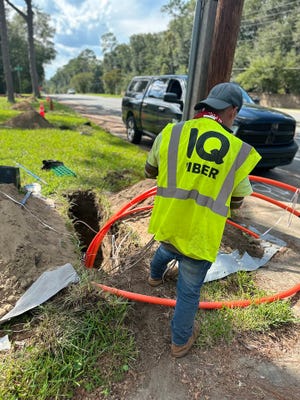These Internet nutrition labels aren’t perfect, and they won’t fix the many crazy things about Internet service. But we have very little power when it comes to Internet service in the United States. Info tags are a huge win for giving you a dose of power back.
I will explain how to find Internet tags, what they are for and their shortcomings.
How to use Internet nutrition labels
As of Wednesday, most Internet service providers in the country, including Xfinity, Spectrum, Optimum, Cox, AT&T and Verizon, are now required to include information labels where you purchase service. This is usually on their websites.
Generally, companies sell their Internet service only in select areas or even only in certain neighborhoods or individual apartment buildings.
It’s worth checking your potential options for Internet providers by entering your address into this handy, but imperfect, interactive FCC map.
Most people should only consider companies listed in the technology category such as cable, fiber to the premises or NGSO Satellite. (The latter is Elon Musks Starlink internet service broadcast via satellite.) Note that this information may not be completely accurate.
Also look at the 5G options on the mobile broadband tab. This is a rapidly growing option that relies on mobile phone networks for home Internet service. It’s a great option and (for now) relatively affordable for some people. It doesn’t work well for everyone.
Once you’ve compiled the companies that sell the service where you live, it might just be one or two, you can look up their information labels online.
Search for the company’s website and enter your address. When you see the options for the available internet service packages, you want to click on broadband data. These are the information labels required by the FCC.
(A provider probably won’t show you an information label if they don’t offer Internet service where you live. In at least one case, I had to click as if I were buying Internet service before I could see the Internet label information.)
In theory, you should see the introductory rate for new services and expected price increases over time. You may sometimes see additional fees that surprise you on your bill.
You should also see typical speeds. In real life, your home WiFi may not be as fast as the speeds advertised to you.
The shortcomings of informative labels
I said in theory because not all of this information was explained in the internet tags I saw.
Nearly half of the information labels on the Internet so far do not comply with the FCC’s disclosure requirements, according to Sascha Meinrath, a professor of telecommunications at Penn State University who helped analyze the information labels this week.
If you see information labels that you believe are missing disclosures, file a complaint with the FCC here. The rules are murky and some of the incomplete information could be filled in over time.
Information labels also only apply to Internet service. You won’t get the same details if you buy a bundle of services like TV, phone and internet. You may end up paying less than the information labels reveal.
Chhaya Kapadia, chief of staff at the New Americas Open Technology Institute, said it would be better if the information labels were on your monthly bill, so you don’t have to look for them online.
Dane Jasper, CEO of well-known Internet provider Sonic, wants you to be able to easily compare information labels from different providers side-by-side. (May be available soon.)
But it was remarkable in my conversations that people who rarely agree with representatives of the big Internet providers, smaller providers like Sonic, and consumer advocates said that Internet labels are useful and a victory for you
Finally, you get easier-to-find answers to basic questions: Which companies provide Internet service where I live? What will it cost me? Is the service good? What’s the catch?
There are so many ways to do these things better, but this is a big problem for consumer transparency, Kapadia said. We have to celebrate.”
#Internet #service #nutrition #labels #Heres
Image Source : www.washingtonpost.com







![iOS features that keep getting more useful [Video] - 9to5Mac](https://lakablog.com/wp-content/uploads/2024/04/ios-features-that-keep-getting-more-useful-video-9to5mac-750x550.jpg)


